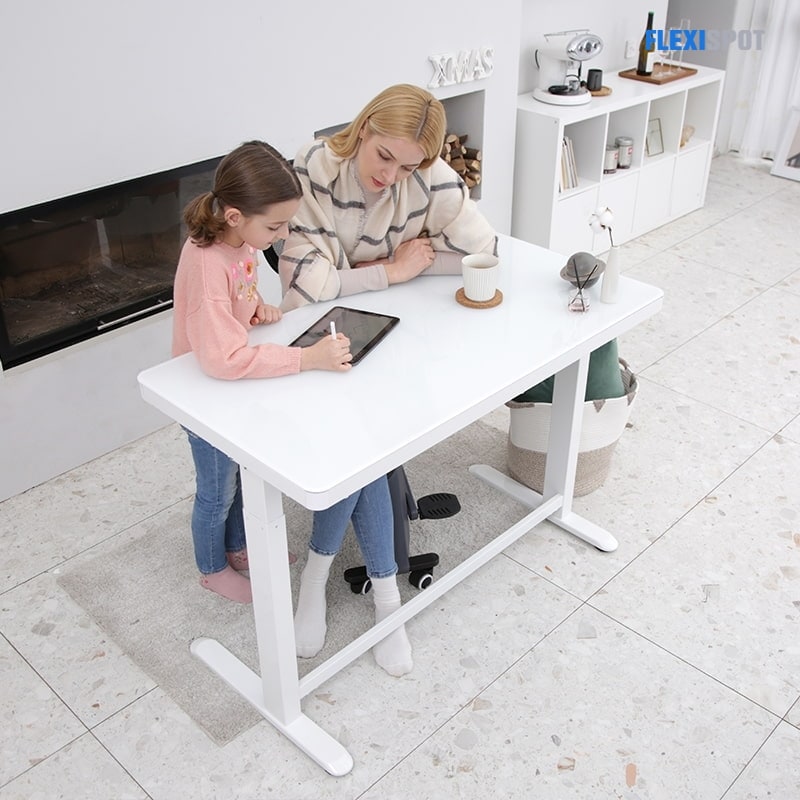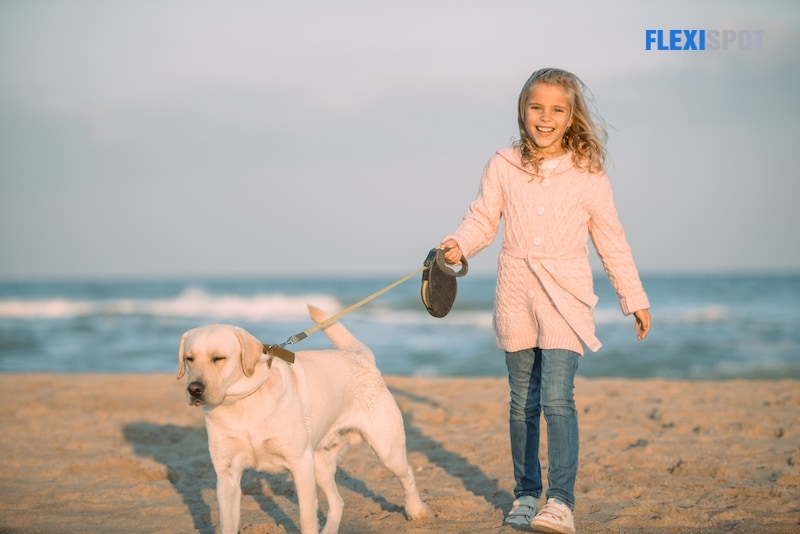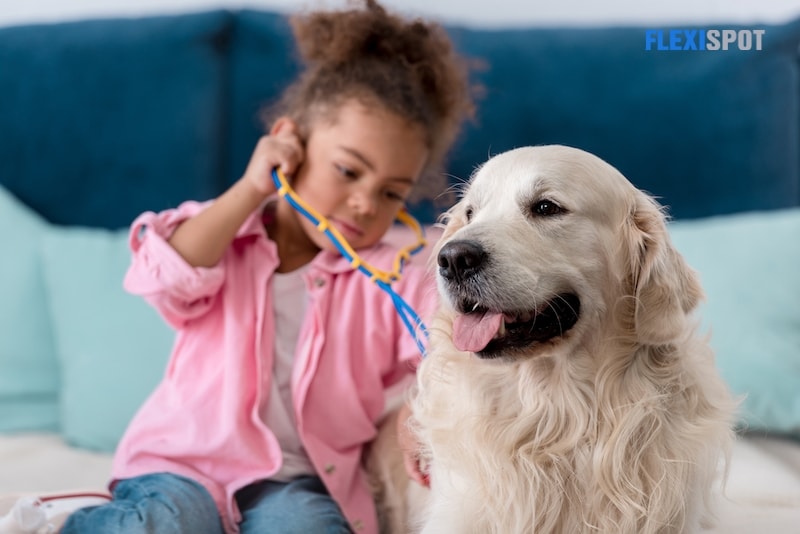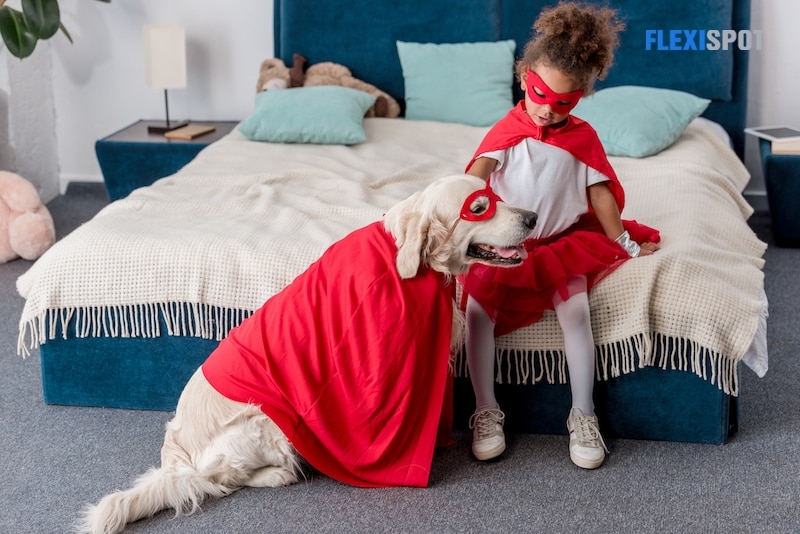Animals give a rich sense of connection, and a wide range of species, including cats, dogs, fish, birds, and horses, have assisted many individuals in coping mentally with the pandemic. Animals may provide some imaginative solutions for educators looking for ways of helping students cope and deal with the potential influence on their communication and language.
Children adore their pets, and with reason. Animals of all sizes and shapes teach, fascinate, and provide a unique form of friendship. Everyone knows that children love animals. An estimated 4 in 10 children are born into a home with domestic animals, and up to 90% of all children live with an animal at some point during their upbringing. Research indicates how relationships with animals can enhance children's socio-emotional skills. It also looks at how we can make sure that the well-being of both learners and animals is taken into account.
Animals in the classroom are becoming increasingly popular in recent years. There are a handful of comparisons between pets and how children study, whether the pet in the schoolroom is a permanent class member, or whether a dog comes to visit on some days to sit with children and listen to them read. There are various advantages to studying and learning with a pet, whether it's a cat, dog, guinea pig, rabbit, or something else.
Self-Esteem and Empathy
According to one study, “the child who cares for a pet knows what he does matters, and so he will want to do more of it.” The better he feeds, walks, or emotionally bonds with the pet, the more confident he will feel.” Another study found that children who have pets have better self-esteem than those who do not have one. According to studies, there is a favorable association between children's self-esteem and educational excellence. The more we work to improve children's self-esteem, the more likely they will attempt a math assignment that is slightly more difficult than they are accustomed to, because they are less concerned about making a mistake.
Responsibility
Pets must be cared for in various ways, including providing freshwater, feeding them daily, cleaning up after themselves, and so on. Teachers can teach students about fostering and caring for others. They can give daily duties for students to complete to help care for their class pet. Students may be in charge of bringing the pet home with them during weekends and holidays. This teaches children even more accountability because they are fully responsible for ensuring they are adequately cared for during their time away from school. Students are also responsible for ensuring the safety of the pet. They can learn to care for something delicate and smaller than themselves, instilling love and compassion in them.
Literacy
When a child reads out loud to a pet, their literacy improves dramatically. Dog-reading programs are very beneficial for children who struggle with dyslexia. Reading ahead of classmates, according to psychologists who deal with such children, exacerbates learning difficulties. Errors appear to be multiplied when made in front of a scrutinizing audience. Feeling ashamed contributes to low self-esteem in a learning challenged child. Therapy dogs, on the other hand, help to fail readers feel confident. Pets are naturally nonjudgmental. Students feel accepted when dogs are trained to listen carefully. Reading becomes less terrifying in this calm state, making learning smoother and paving the route to fluency.
Learning Experiences
Students who do not have access to animals at home can still associate with them. When students have regular interactions with animals, they develop a sense of consciousness. Likewise, when there is an animal in the classroom, students have something to anticipate. Rather than dreading going back to school, children look forward to the opportunity to socialize with their class pet. It gives kids something exciting to look forward to in their classroom daily. Animals can make the class more enthusiastic about learning. They will appreciate working on math or scientific projects involving their class pet. Students can also examine how their actions impact others. Children can learn a lot from animals, either personally from them or through the teacher's use in lessons. There are numerous educational perks, particularly those relating to science and the environment, that having a pet in the classroom can bring to the students' everyday lives.
Alleviates Anxiety and Stress
Engaging with animals has been demonstrated to lessen cortisol levels (a stress-related hormone) and blood pressure. Sitting and watching an aquarium is one example of this. Watching fish resulted in “noticeable reductions in participant heart rate,” according to the researchers. Another study discovered that observing fish can reduce anxiety by up to 12%. Fear and anxiety can have an impact on children's learning. Children are considerably more interested in learning when they are less worried and disturbed. They require a secure and safe setting where they can be as happy and tranquil as possible and be as committed to learning as possible.
Beats Loneliness
Students will hardly feel lonely since an animal companion will always be with them, assisting them in getting through difficult moments and allowing them to concentrate on the essential things in life. Children, and even teenagers, are frequently lonely due to their parents' busy schedules and a lack of companions or siblings. Having a cat or a dog, on the other hand, will teach children to care and keep them on track when studying. A pet will constantly be at their side, removing loneliness and allowing them to concentrate more on schoolwork and studying.
Promotes Activity
With a pet as a study companion, your student will be compelled to take short pauses to play, snuggle, or feed the animal, allowing their brain to unwire and relax for a few minutes. Short, frequent breaks will boost their focus and productivity. Accompanying their dog for a brief walk will also help children get some fresh air, which is necessary for their brain to function correctly, particularly during times of high stress and physical exertion.
TIP: If you are using one of FlexiSpot's height-adjustable standing desks, whether from home or school, along with pets such as cats, bunnies, dogs, you can rest easy as FlexiSpot's standing desks are sturdy and stable to have you or students work an study with them.

The Comhar All-in-One Standing Desk is a perfect example as this is packed with features that are safe enough to be used around kids as well as the furry and four-legged ones! The Comhar has four programmable height presets, which is ideal for multiple users to save their favorite height setting in a family or work share situation. With a single button press, you may simply and smoothly transition from sitting to standing. By clicking this button, you can disable the control panel feature so that you are not plagued by unintentional touches from your children or fluffy pet companions. The anti-collision mechanism protects the desktop by preventing it from being damaged or smashing other objects and gadgets while in motion. Comhar was created with the entire family in mind, and it features a wide adjustment range that makes it even friendly with children.
You should start thinking about what kind of classroom setting you want to establish as soon as possible. A class pet can be a perfect complement to your class. Studying with pets has several advantages for physical and mental health, productivity, and overall well-being.


